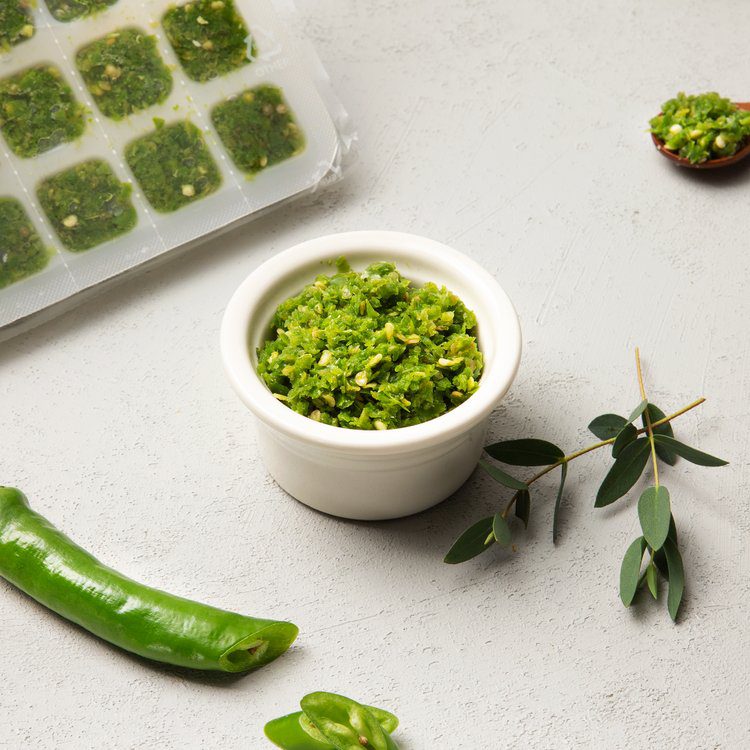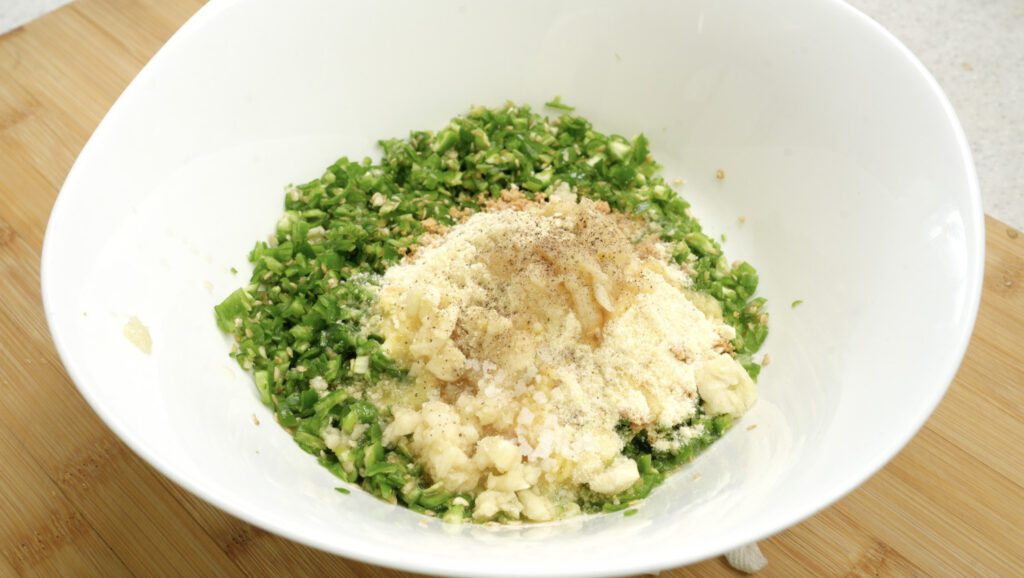Korean Cheongyang Chili Pesto: A Spicy Twist on Traditional Italian Pesto 🌶️
Korean Cheongyang Chili Pesto
This trending Korean pesto recipe transforms the classic Italian concept with Korea’s fiery Cheongyang chilies!
Unlike traditional basil pesto, this Korean-style pesto combines the intense heat of Cheongyang peppers with
Grana Padano cheese and Korean fish sauce (aekjeot) to create an umami-packed condiment that’s taking Korean
kitchens by storm. Once you make this versatile Korean sauce, you’ll find yourself adding it to grilled meats, pasta,
bibimbap, and countless other dishes.

1. What is Korean Cheongyang Chili Pesto?
1-1. The Korean Twist on Italian Classic
Korean Cheongyang chili pesto is a brilliant fusion that takes inspiration from Italy’s beloved basil pesto but
reimagines it with distinctly Korean flavors. This Korean recipe showcases Cheongyang peppers,
known for their intense heat and bright flavor, combined with traditional Korean fish sauce to create a uniquely
Korean condiment that bridges Eastern and Western culinary traditions.
1-2. Health Benefits of This Korean Creation
Cheongyang chilies are packed with capsaicin, which offers antioxidant and anti-inflammatory properties.
Studies suggest capsaicin may help with metabolism and pain management.
The Korean fish sauce (aekjeot) adds natural umami through its rich amino acid and nucleic acid content,
providing deep savory flavors without artificial additives.
2. Korean Cheongyang Chili Pesto Ingredients (Makes about 300g)
2-1. Main Ingredients
- 300g Cheongyang chilies (Korean hot peppers)
- 30g Grana Padano cheese (finely grated)
- 30g almonds (toasted)
2-2. Korean Seasonings
- 1 tablespoon sugar
- 2 tablespoons minced garlic
- 3 tablespoons aekjeot (Korean fish sauce)
- 4 tablespoons sesame oil
- A pinch of black pepper

3. How to Make Korean Cheongyang Chili Pesto
3-1. Preparing the Korean Ingredients
Remove stems from Cheongyang chilies and wash thoroughly, ensuring they’re completely dry.
These Korean peppers are quite spicy, so remove some seeds if you prefer less heat. Toast the almonds in a dry pan
over low heat for 2-3 minutes to enhance their nutty flavor – this step is crucial for authentic Korean pesto flavor.
3-2. The Korean Blending Process
In a food processor, combine the Cheongyang chilies, toasted almonds, grated cheese, sugar, and minced garlic.
Pulse until roughly chopped – don’t over-process as Korean pesto should retain some texture. The key to authentic K
orean pesto is maintaining the balance between smooth and chunky.
3-3. Final Korean Seasoning
Add the Korean fish sauce (aekjeot) and sesame oil to the mixture. Pulse briefly to combine and achieve the
right consistency.
The fish sauce is what makes this truly Korean – it provides the deep umami that sets this apart from Western pesto
varieties. Adjust seasoning to taste with additional sugar or pepper.
4. Storage and Korean Cooking Applications
4-1. Proper Storage for Korean Pesto
Transfer your Korean Cheongyang chili pesto to a clean glass jar and top with a thin layer of sesame oil to prevent
oxidation. When properly stored in the refrigerator, this Korean condiment will stay fresh for 2-3 weeks.
4-2. Korean and Fusion Applications
Korean BBQ Enhancement
This Korean pesto is incredible with grilled Korean pork belly (samgyeopsal) or chicken wings. The spicy heat cuts through rich, fatty meats while the fish sauce adds authentic Korean depth.
Korean-Italian Fusion Noodles
Mix this Korean pesto with cooked somyeon (thin Korean noodles) or Italian pasta for an amazing Korean-Italian fusion dish. Add a soft-boiled egg and some nori for extra Korean flair.
Korean Rice Bowl Topping
Drizzle over bibimbap or Korean rice bowls instead of traditional gochujang for a completely different but equally delicious Korean flavor profile.
Korean-Style Sandwiches
Spread on bread instead of butter for Korean-inspired sandwiches with ham, cheese, and vegetables – it’s like having a Korean street food sandwich at home.
Korean Marinade Base
Mix with soy sauce and a touch of rice vinegar to create a Korean marinade for chicken or pork that’s unlike anything you’ve tried before.
5. Tips for Korean Cooking Success
5-1. Managing Korean Chili Heat
Cheongyang peppers vary in spiciness, so start by removing about half the seeds for your first batch of Korean pesto.
You can always make it spicier next time based on your heat tolerance and Korean food preferences.
5-2. Achieving Perfect Korean Pesto Consistency
The ideal Korean pesto should be thick enough to coat a spoon but still spreadable. Add more sesame oil if too thick,
or more cheese if too thin. Remember, Korean cooking is all about balance!
5-3. Understanding Korean Fish Sauce
Aekjeot (Korean fish sauce) is different from Southeast Asian fish sauces – it’s typically saltier and more pungent.
If you can’t find Korean aekjeot, Vietnamese or Thai fish sauce works, but reduce the amount slightly and
add a pinch more salt.
This Korean Cheongyang chili pesto represents the beautiful evolution of Korean cuisine –
taking global inspiration while staying true to Korean flavors and ingredients.
It’s a perfect example of how Korean cooking continues to innovate while honoring traditional Korean tastes.
Once you try this Korean fusion sauce, you’ll understand why it’s become such a sensation in Korean home kitchens! 🇰🇷✨
Tip: Try it with Korean samgyeopsal (grilled pork belly).
It’s going to blow your mind — I guarantee it! 😋🔥
If there’s anything about Korea you’re curious about,
feel free to leave a comment or contact me through the blog.
I’ll pick the best topics and post them here for everyone to enjoy!
Wishing you a beautiful and joyful day today.
[Follow the thread]








